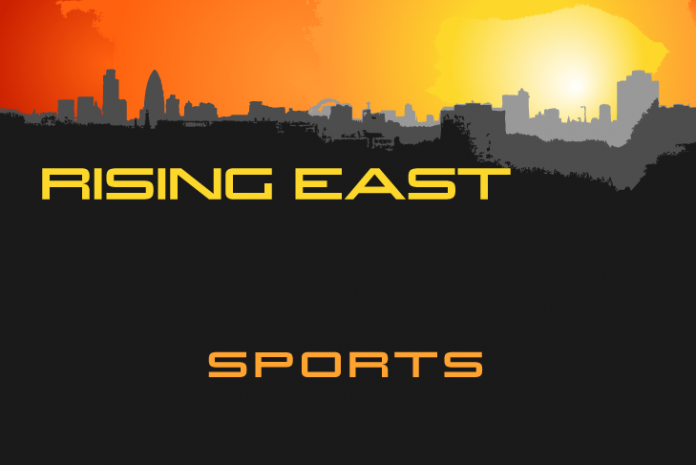Jack Giordmaina assesses the Olympic legacy…
The legacy of London 2012 was always questioned by the locals of East London in the run-up to the Olympic games. However, three years on it seems that the Olympic Park is still relishing as a top tourist attraction from overseas and across the UK.
The Lee Valley Velodrome has been very successful in reaching the public since it was reopened in 2014. One of their goals of inspiring a new generation of young athletes has started successfully with hundreds of children trying out an introductory biking lesson at the Velodrome where Sir Chris Hoy won his five gold medals and tied Sir Steve Redgrave’s tally of six medals won by a Great Britain athlete at the Olympic games.
However, Paul Bloomfield-Bray, the public relations officer for the Lee Valley Velodrome, explains that what the VeloPark are trying to achieve now is not just based on what was originally set out to be the legacy.
“Although the London 2012 Legacy is about attracting the next generation of athletes. For us, it also deals with reaching groups and communities, who have previously been considered ‘hard-to-reach’ these are the areas that we want to focus on so everybody has an equal chance of succeeding in sport, or just simply playing sport,” he says.
This philosophy seems to be having the desired effect as the Velodrome have targeted schools in order to try and reach as many children as they possibly can from areas of East London. So far, they have reached 640 children through leaflets they send out to schools about their half-term activities. Bloomfield-Bray feels that this system is an important part of trying to reach children of lower socio-economic status to take part in sport.
As well as this, the Lee Valley VeloPark also helped start a schools festival which includes schools from all of the London boroughs, Essex and Hertfordshire in order to reach as many schools as possible from London and the surrounding areas.
“We also introduced the Youth Winter Track League, which is now full and we are incredibly proud of this. The Lee Valley VeloPark, Lee Valley White Water Centre and Lee Valley Hockey and Tennis Centre all host different schools festivals, which invites schools from every London borough and every district of Essex and Hertfordshire to experience world class facilities at iconic venues. This year over 150 primary and secondary schools were invited and approximately 1,200 students. We think this is the legacy at its best!” says Bloomfield-Bray.
But the VeloPark does not believe that the legacy is just a sporting one for young people. They believe that the VeloPark should also have an educational purpose to the students visit. They wanted to teach children about what the impact of the having a world class tacitly does to the local area, as well as looking at the wildlife and the environmental impacts.
“We provided one of the first Youth and Schools programmes for children out of all the former London 2012 venues. Our programmes are aimed at both Key Stage 2 to Key Stage 4 and look academically at things as simple as the beauty of the building and the surrounding wildlife, to the environmental and economic impact of Lee Valley VeloPark on the surrounding area,” he adds.
Another aim of the Lee Valley VeloPark was to make sure that they can bring world-class track cycling back to the Olympic Park once the Olympics had finished. Over the years, this has been a major problem. The 2004 Olympic Games in Athens failed to bring any sporting games back to Greece, which ultimately led to a deserted Olympic Park. The Lee Valley Velodrome and the rest of the Olympic Park were adamant not to let the same mistake happen in London.
The Velodrome has already had the UCI Track Cycling World Cup and held the fifth round of the Revolution series this year. Bloomfield-Bray feels that hosting these events are crucial in order to maintain the Olympic legacy of providing world-class sport for the public.
“It is vital to hold major international events at the former London 2012 venues, especially at the VeloPark,” he emphasises. “It shows that there is still, and will continue to be an important use for these centres, as well as continuing to inspire people and raising the profile of the venue, and the sport as a whole, which can in turn attract more funding. This, of course, is not to forget the community aspects of the venue, like its day-to-day running and the fact that members of the public are welcomed, either as participants, spectators or visitors, 364 days a year.”
Also, hosting major sporting events will help provide the economic legacy of the local area of Stratford and its surrounding areas, as spectators and tourists will have to pass through those areas to get to venue, which will drive up tourism and provide money for local businesses. This in itself should be able to help the regeneration process of Stratford and the surrounding areas, as new businesses and local businesses will be able to sell their products, as there will always be an influx of people to that area, due to the Olympic Park hosting these major sporting activities. All of the economic impacts are assessed before deciding to host a major sporting event.
Therefore, the VeloPark has had a successful start to its legacy campaign. The aim now is to keep building on what they have achieved so far by bringing back major sporting activities back to the Velodrome consistently year after year – as well as setting up more initiatives to bring as many children as possible from the surrounding areas to the Olympic Park.

